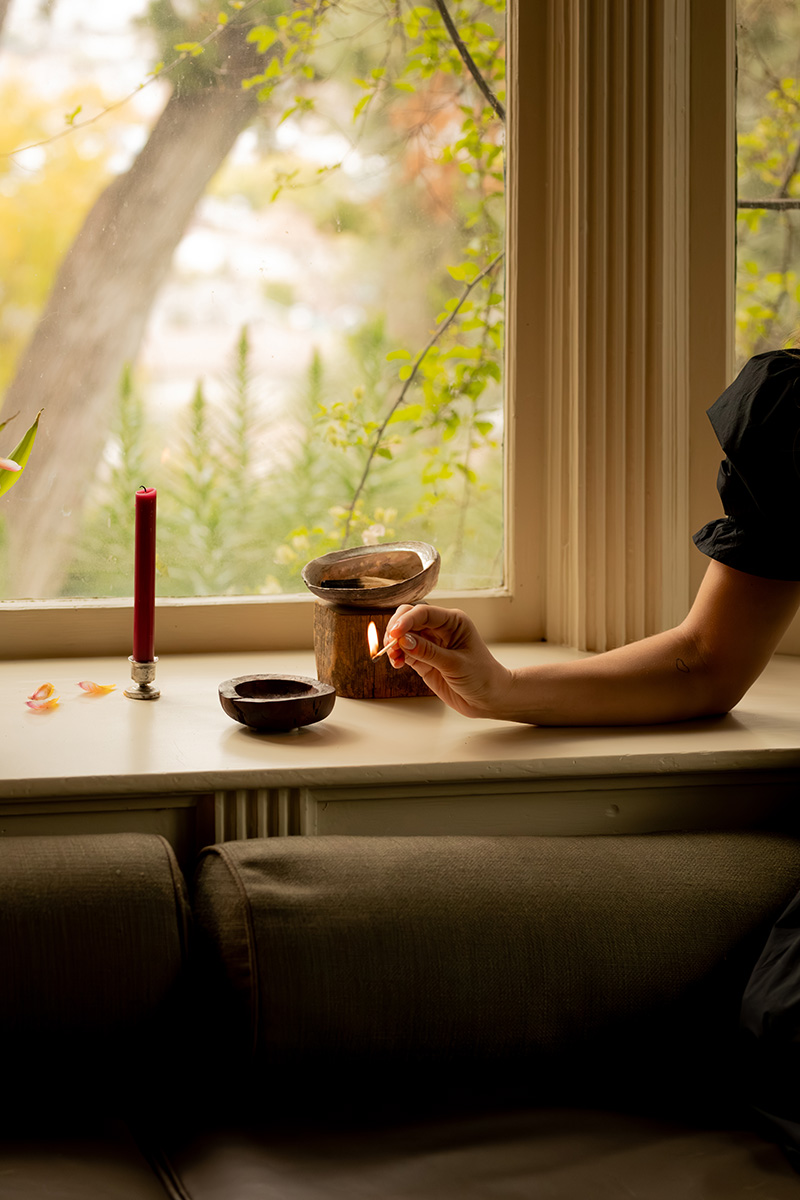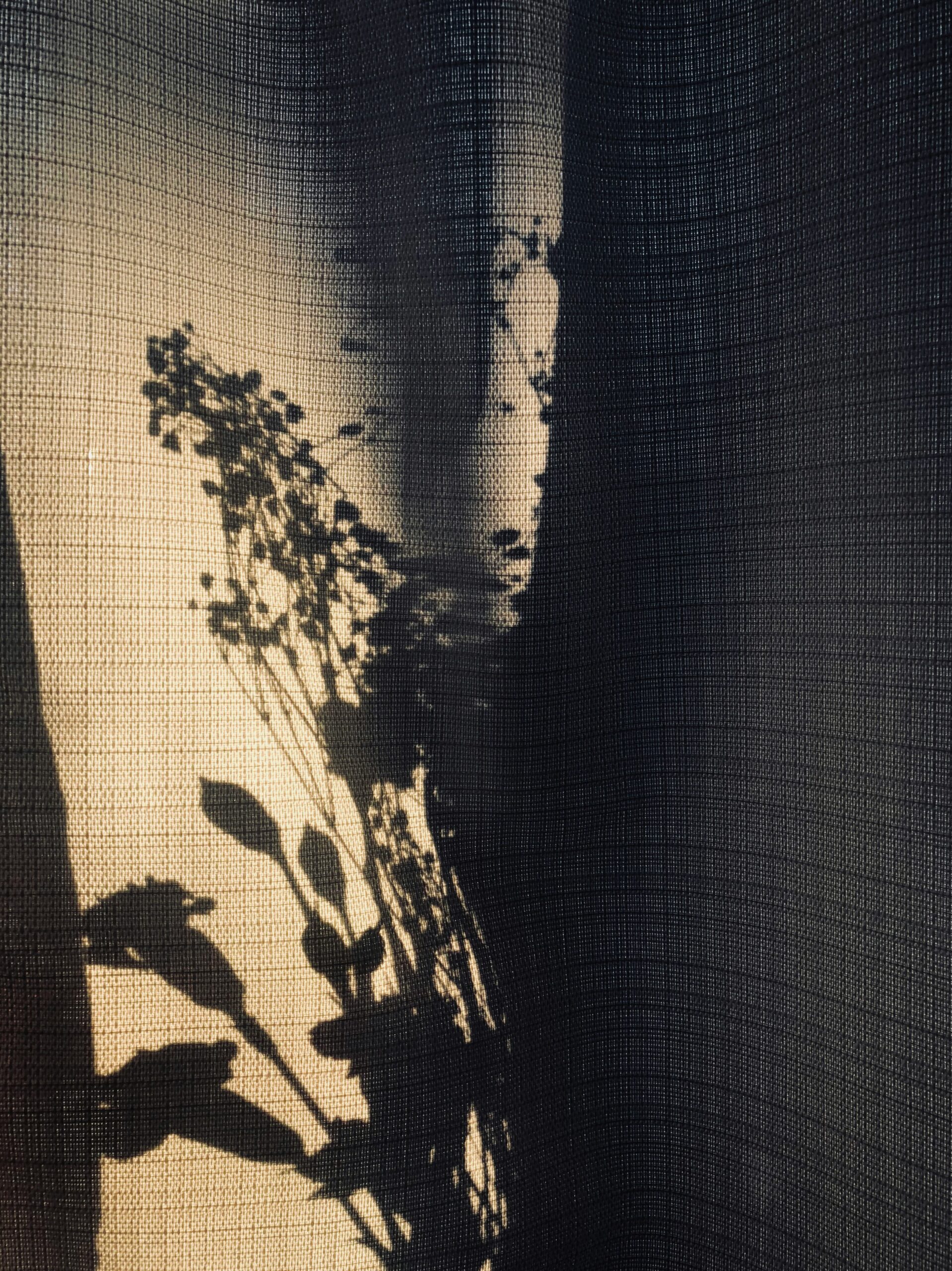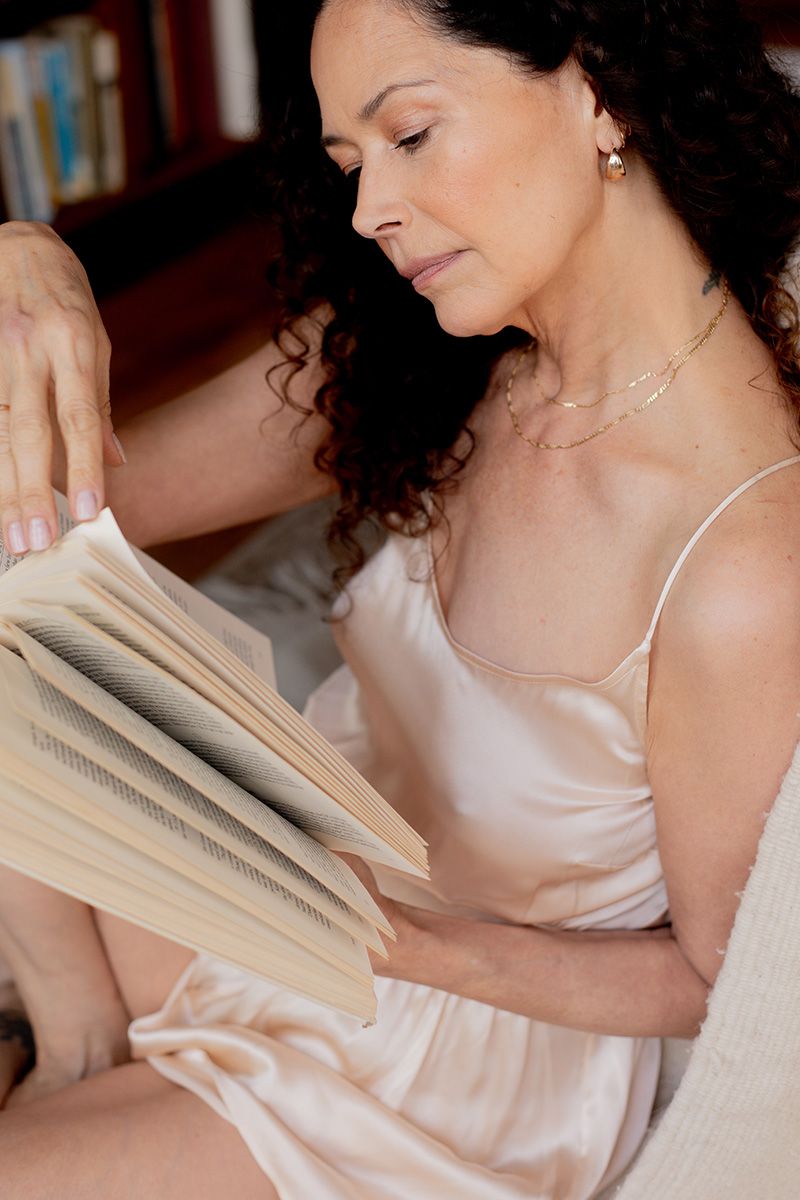
How To Use Oracle Cards For Gentle Spiritual Guidance
Pulling an oracle card — or several — is among my favorite daily rituals. My basket of decks (current count: 14) is a curated collection of cards chosen for their art, insight, and motifs. One deck features whimsical moments, another imagines hidden realms. The teachings of Rumi, color theory, spiritual ecology, classic archetypes, marine animals, and global goddesses can be found in my basket. The cards are an assemblage of varied perspectives that I sift through and select depending on my mood, usually in the morning. I am not alone in this.
“The cards are an assemblage of varied perspectives that I sift through and select depending on my mood, usually in the morning.”
“I love pulling oracle cards in the morning with a cozy cup to set an intention for the day,” says Adriana Ayales, founder of Anima Mundi Herbals and creator of the Herbal Astrology Oracle. “In the evenings, I love winding down and lighting candles, going deeper into the psychic and divinatory realms with the oracle.”
Oracle cards provide an intuitive alternative to the more structured Tarot, an accessible entry for those after some extra insight. I often encourage visitors to pull a card, and a carefully chosen deck is among my favorite gifting items for both myself (again, 14 decks) and others.
What are oracle cards?
Greeks and Romans had human augurs and mythological oracles — we have oracle cards. Oracle cards are decks that feature a cohesive collection of illustrations and messages, designed to offer observations, information, insight, or all of the above depending on your aims.
Take Ayales’ deck, for example. The Herbal Astrology Oracle gleans guidance from medicinal plants and their planetary rulers. Each card features an illustration of the plant in question (by artist Josephine Klerks) and a laconic message (“Breakthrough,” “Stillness,” “Sensuality”). There’s also an accompanying guidebook delving into traditional uses, spiritual associations, and guidance for the querent (aka you).
“Oracle cards are decks that feature a cohesive collection of illustrations and messages, designed to offer observations, information, insight, or all of the above depending on your aims.”
“I find the deck to be unique in that it has a big educational component on the traditional and medicinal uses, including folklore and religious uses,” says Ayales. “It also integrates medical astrology and how the plant archetypally personifies the energies of planetary placements and alignments.”
Oracle cards are mutable. While each deck is thematic, using it is not a prescribed activity. You can pull one card or several, and use the typically provided guidebook or your own interpretation. “They’re a powerful tool for communion with yourself and life’s possibilities,” says Ayales.
Often, guidebooks contain suggested spreads from the creators, those aligned with the deck’s design. My all-time favorite comes from Kim Krans’ The Wild Unknown Archetype Deck, which is comprised of four suits: The Selves, The Places, The Tools, and The Initiations. “The Inner Quest” spread asks querents to divide cards into these four categories and choose one of each, resulting in a personal odyssey built of “who, where, with what, and why.” The spread allows you to imagine your situation as a story, a simple separation that can make the complex a bit clearer. And who doesn’t love a hero’s journey?
Oracle cards versus tarot cards
Oracle cards are the gentle, beautiful, baby sister of traditional Tarot, easing users in the correct directions and offering archetypal advice without the punch in the gut that can sometimes accompany a Tarot reading. While a Tarot deck consists of 78 cards — 22 major arcana and 56 minor arcana, each with a generally agreed-upon interpretation — oracle decks have no such uniformity, instead consisting of whatever the creator needs to get their message(s) across.
“Oracle cards are the gentle, beautiful, baby sister of traditional Tarot, easing users in the correct directions and offering archetypal advice.”
“Tarot has specific meanings and specific symbolism associated with each archetype, as well as a specific flow that defines the souls’ possible journey,” explains Ayales. “Oracles are much more accessible as they don’t usually have a defined core with specific categories, and ‘destined’ outcomes.”
While both Tarot and oracle cards can be used as divination tools, they’re also a beautiful means of accessing our own energy and perhaps learning something new in the process. Oracle cards just provide a little bit more freedom.
How to use oracle cards
1. Pick a deck, any deck
Start by finding a deck that resonates with you. Oracle cards range from esoteric to scientific, incorporating art and educational value into a comprehensive package. As the space expands, so does the uniqueness of the offerings within it, so shop around until you find the cards that truly speak to you.
2. Consider your intention
“Determining the ‘why’ of your pull is essential.”
Determining the “why” of your pull is essential. Are you looking for advice or a new perspective around a specific question or situation, or simply an impression of your current energetic state? “Working with an oracle deck isn’t just about seeking answers,” says Ayales. “Oracle cards can be used as an inspirational gateway to reflection and inner guidance, as journaling and meditation prompts, a means of igniting creative processes, or just general check-ins for the day ahead.”
3. Find your center
Take a few breaths to help ensure a calm and centered space before selecting your card. Envision your mind as a small pond, each slow inhale and exhale calming any ripples until you have a glassy, still surface. Shuffle the deck while you breath, infusing the cards with your energy. Always shuffle until any anxiety or ill ease has dissipated, as you want to pull from a place of purity. The better your energy, the better the reflection!
4. Pull and ponder
Use a suggested spread, cut the deck into thirds and reassemble, fan the cards out, or simply pull from the top — there are no rules here. Once you’ve chosen your card (or cards), use the guidebook and your own intuition to interpret its meaning. “I try not to look too much into the meaning of potential outcomes and future potentials, but more as meditative exercises,” offers Ayales.
“Use a suggested spread, cut the deck into thirds and reassemble, fan the cards out, or simply pull from the top — there are no rules here.”
On a recent retreat hosted at the Corcovado Wilderness Lodge in Costa Rica, I had the pleasure of meeting Ayales. On our final night in the jungle, a group of us took out her deck, each pulling a card, reading the insights aloud, and then passing it on. Even the staff got involved. It was an incredibly human experience, and a perfect representation of what I love about decks: Each card offers voice and embodiment to our inner experience, ultimately allowing us to share that with others.
Have you ever used oracle cards? We’d love to hear your favorite way to use them in the comments!
Calin Van Paris is a freelance writer and editor specializing in beauty, wellness, and lifestyle. In addition to crafting language, you can find her exploring the planet, picking flowers and vintage, and reading anything that enriches her experience.




